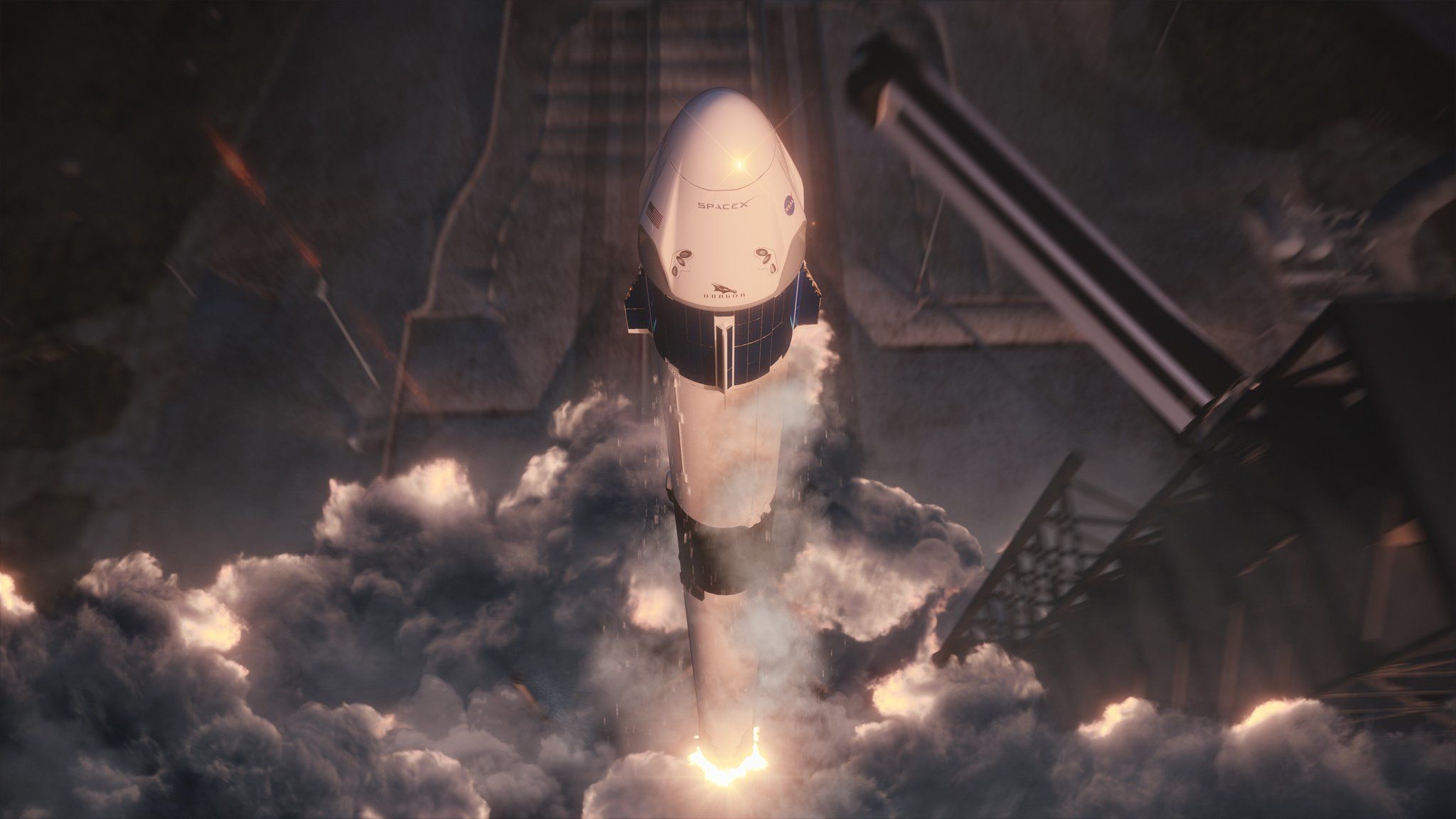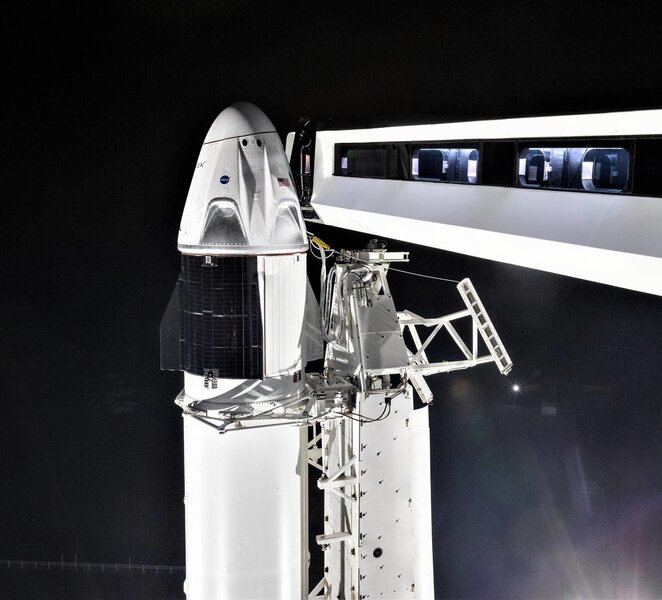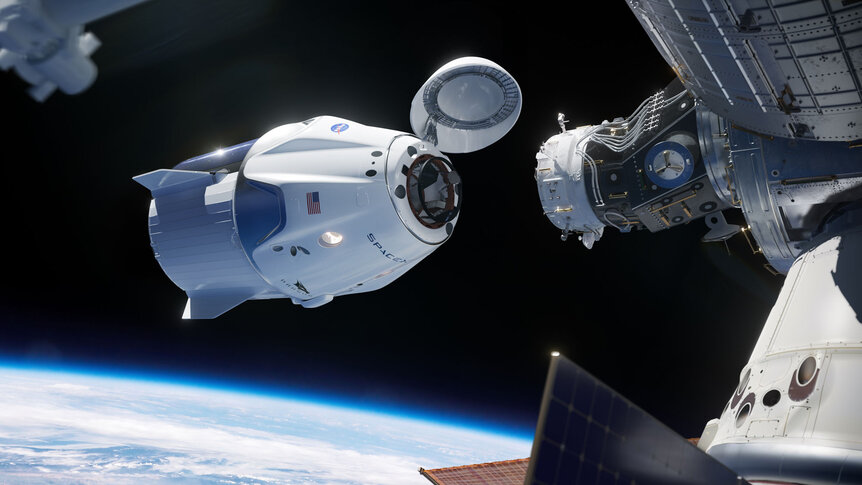Create a free profile to get unlimited access to exclusive videos, sweepstakes, and more!
Tonight SpaceX takes the next big step in returning Americans to space

If you live in the U.S., you might want to stay up late for this: on Friday night/Saturday morning (March 1/2), at 2:49AM Eastern time, SpaceX is hoping to launch a Falcon 9 rocket with a crew-rated Dragon capsule on top. There won't be any humans on board — I want to be clear on that — but this is a critical test flight to the International Space Station (ISS) to make sure everything is up to NASA's standards for launching humans into space.
NASA and the US have not been able to launch humans into space since the Space Shuttle Atlantis flight in July 2011, after which the Shuttle program was retired. Not long after, NASA picked Boeing and SpaceX as recipients of funding for their new Commerical Crew Program, but it has been eight long years since people launched from American soil. NASA has been buying seats on Russian Soyuz rockets in the interim. In my opinion, the Russians have been gouging NASA (the price per seat has gone up considerably since the Shuttle stopped flying), so seeing American companies getting ready for flight is welcome.
This launch is the next big step toward that goal. The importance of it can't be overstated.
This uncrewed flight, called Demo-1, will test a host of systems needed to bring humans up to the ISS, including avionics (flight electronics), power (including the solar arrays built into the trunk of the capsule), propulsion, docking, and of course environment control (I like to think of that as life support systems, but then I'm a Trek nerd).
A future flight (scheduled for later this year) will also provide a critical abort test, where the Crew Dragon capsule will use its powerful Draco thrusters to blast away from the Falcon 9 rocket in flight. This will likely result in the destruction of the first stage booster, which will undergo severe aerodynamic stress. Incidentally, the booster being used for that launch has been flown three times previously, including the recent launch that included the Israeli lunar lander.
Demo-1 passed the Flight Readiness Review by NASA last week, and everything is all set for the Friday night launch (as I write this weather is 80% favorable). The Crew Dragon capsule is loaded with just under 200 kilograms of supplies for the astronauts on ISS; in general the cargo flights have far more supplies, more like in the ton range or more, but given this is a test flight that may explain why there's less.
The capsule is outfitted almost exactly the same as a crew capsule will be, but instead of people there will be a mannequin wearing a SpaceX spacesuit — shades of Starman! I expect there will be plenty of cameras inside the capsule (including looking out the windows) as well as the usual rocketcam views. The capsule is fully autonomous and will dock* to the ISS about a day after launch.
Because of the rapid approach to ISS, the first stage booster will use more fuel than usual to toss the upper stage with the Dragon into orbit, so it won't be coming back to Florida to land; instead it will land downrange in the Atlantic Ocean on one of the SpaceX floating drone barges.
NASA will have a live feed for the launch, and of course SpaceX will as well. If you want tons of details of the mission, Jason Davis at The Planetary Society has you covered. The Teslerati blog is a good source of info, too.
I don't usually stay up late for launches (it's at 12:49AM my time) but I'll make an exception this time. I am a fan of SpaceX, and what they're trying to do. There's been plenty to ding them on — delays and some non-standard procedures being a big chunk — but they've been flexible, adapted to new situations, learned from errors, and in general have done a great job not in just making access to space easier and less expensive, but also in getting the public excited about it.
I do like seeing that. A lot is going on in crewed commercial spaceflight right now — Blue Origin has its sights set on launching orbital rockets as well as passenger suborbital flights soon, Virgin Galactic is nearing readiness for launching paying customers on suborbital flights as well, and Boeing is readying its own crewed vehicle for launch tests as part of NASA's Commercial Crew Program as well — and this launch by SpaceX will be the first, if giant, step.
Let's hope the wind is at its back.
*Note the term "docking," this is used when a vehicle attaches itself to ISS under its own power. Sometimes the Dragon cargo capsule was "berthed," which means an astronaut on ISS would use the Canadian robot arm to grapple it and pull it in. The terms have different meanings, so be aware of that during the procedure.




























